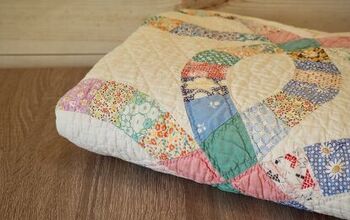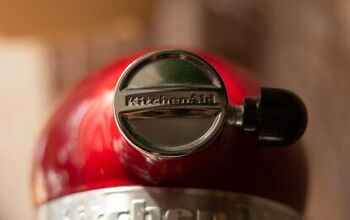Why Is Dyson So Expensive? (Find Out Now!)

When it comes to shopping for home appliances, it is important to find a quality product that is within your price range. It’s no secret that Dyson has high-quality products across many different sectors. The question we’re answering today is why do they cost so much?
Dyson is a home appliance company that sells vacuums, hair products, air treatment products, and lighting. Across the board, they are known for offering premium products that are durable and long-lasting. That said, they are going to be fairly expensive. This high price point has a lot to do with Dyson’s position in the market, their innovative mindset, and the quality materials they use.
In this article, we’ll be breaking down all the products Dyson offers and why they cost as much as they do. Then, you can decide if you want to invest in some of their products for yourself.
Cost Factors for Dyson Vacuums
Dyson produces a wide range of vacuums, including cordless stick vacuums, upright vacuums, canister vacuums, and hardwood floor vacuums as well as vacuum stands, tools, and accessories. Here’s why they are able to sell these products at a high price point, which usually ranges from $400 to $900 on average.
Industry Pioneers
Dyson has been recognized as a forerunner in the vacuum industry since the early 1970s when they made the firsts cyclonic vacuum. This vacuum creates dual cyclones to separate dust to ensure you’re getting 100% suction power when operating the appliance.
They continuously pushed the limits and came out with one-of-a-kind vacuum designs that were capable of things standard vacuums were not. They were the inspiration for many other manufacturers who then adopted their ideas and technology and made it into an industry standard.
As the pioneer for this technology, Dyson products hold a lot of value and are worth a lot. That’s one reason why they price them as such.
Research and Development
You won’t find a new Dyson product on the market every year like some other manufacturers. Instead, they invest billions of dollars in research and development to make sure they are providing more efficient designs and technology.
Typically, they take several years to inspect and test their vacuums before they hit the market. For this reason, the products that they do make it are worth it. The cost for this extensive research is also factored into the final cost.
Innovative Products
Because they spend so much on research and development, Dyson comes out with innovative products that are highly advanced and long-lasting. Their focus is always on the future. On top of being constructed with Cyclone, Dyson vacuums include some of the best technologies, including…
- Flexible hose to better reach tight corners.
- Ball feature for enhanced maneuverability.
- Cinetic Science™ to avoid dust build-up in the vacuum.
- Transparent bins to help you monitor dust and debris levels
- Dynamic Load Sensor technology to adjust power across different floor types.
- Anti-tangle technology to prevent hair from wrapping around the brush bar.
- Convenient stick for your ease and comfortability
- Bladeless fans for smooth airflow and a futuristic look.
- HEPA (High-Efficiency Particulate Air) Filtration for preserving indoor air quality.
…and more!
High-Quality Materials
On top of having advanced designs, they back them with exceptional materials that are functional, durable, stylish, and efficient. They’re knowns for using lightweight materials that will make your life easier around the house. Additionally, they have high-powered motors, filter technology, and many other features that we listed above.
Their choice of material ensures their products are low maintenance. Odds are, you won’t ever have to take a Dyson vacuum to a repair center. Plus, cleaning and changing the filters is a breeze. Finally, Dyson vacuums can last upwards of a decade, making them a lasting investment for your home.
Cost Factors for Dyson Hair Care Products
Though Dyson is most known for their vacuum lines, they also offer quality hair care products. These include hair stylers, dryers, and straighteners. They also sell cases, crushes, stands, and additional attachments. Here are the average price ranges as well as some of the features that cause them to be more expensive:
Dyson Supersonic™ Hair Dryer: $400 – $500
It’s true that $400 is a lot to spend on one hair care tool, but Dyson made sure it would be worth it. For starters, over 100 engineers worked on this product over the course of four years to ensure it was the best it could be. Some of its main benefits include:
- Air temperature measurements 40x per second to avoid any heat damage to your hair.
- Fast-drying technology, including a small motor that is 6x faster than standard hair dryers.
- Lightweight build for convenient handling and transportation.
- Three-speed settings and four heat settings, including a cool blast.
- Air Multiplier technology to create a high-velocity, high-pressure stream of air.
- Your choice of magnetic attachments, including smoothing nozzles, styling concentrators, flyaway attachments, wide tooth combs, differs, and more.
…and more!
Dyson Corrale™ Straighter: $450 – $550
If you’re in the market for a hair straightener and have a decent budget for it, the Dyson Corrale™ straighter may be the right choice for you. Dyson’s hair straighter is convenient and useful for many reasons, including…
- Flexing plates to gather and shape hair while using less heat.
- Energy-dense battery to allow for cordless operation.
- Special engineering to create different styles such as waves, curls, or straight hair.
- Intelligent heat control that regulates temperature 100x a second.
Dyson Airwrap™ Styler: $550 – $600
Dyson’s Airwrap™ styler is their most expensive hair care product, but it’s also the most versatile. Here are some of the features that will impact the overall high cost of this product:
- Barrels for curls and waves.
- Brushes to smooth and volumize hair.
- Customizable options based on your hair type, length, and preferences.
- Airflow and controlled heat to dry and style hair at the same time.
- Uses an aerodynamic phenomenon to curve air and attract and wrap hair to the barrel.
Cost Factors for Dyson Air Treatment Products
Dyson offers top-quality air purifiers that will treat the air in your home and improve your overall health. They sell air purifiers with heating and cooling fans, humidifiers, and purifier filters that remove gases, odors, allergens, and pollutants from the air in your home. Here’s how much they cost:
- Dyson Purifiers: $400 – $650
- Dyson Purifiers + Heat/Cool: $500 – $750
- Dyson Humidifier Fans: $800 – $900
Cost Factors for Dyson Lighting Products
Dyson also offers different lighting projects that are designed to reduce eye strain and conserve energy. Even a smaller task light from them will cost a good amount, which begs the question: is it worth it? First, check out the current pricing for their lighting products. Then, we’ll get into why they cost that much:
- Dyson Lightcycle™ task lights: $500 – $600
- Dyson Lightcycle Morph™ floor lights: $800 – $900
Longevity
Dyson Lightcycle™ lights use Heat Pipe technology to cool the LED lights in the lamp. Not only does this make the light safer to use, but it also protects its overall quality and will ensure it can last up to 60 years. So, while you’re paying a lot upfront, you are guaranteed a high-quality light for life.
Energy Conservation
Both the task light and floor lamp are equipped with a motion sensor, so the light will brighten when you’re near it and automatically turn off when you walk away. Over time, this will save you money on your energy bills, which can eventually offset the high initial cost of the lamp itself.
Convenience
These Dyson lights come with many intelligent features that will make it easy to have around the home. It will automatically adjust lighting based on the time of day, how much ambient lighting is already in the room, and even a person’s age to ensure every customer is getting the correct amount of light throughout their home for any given task.
There’s even a wake-up mode that will cause the light to gradually turn on in the morning when you wake up, so you can wake up in the morning more naturally. Smart features like this will always drive the price of a product up due to how much work has to be put into manufacturing it.
Comfortability
Dyson also claims that these lights will simulate daylight instead of LED lighting, which is better on your eyes over time. Plus, there are plenty of different modes you can set the light to, so you’ll have the right atmosphere for any task—studying, writing, relaxing, and everything in between.
Related Questions
How do vacuum cleaners work?
Vacuums clean carpets and flooring by pulling air into it, which sucks up dirt and dust. Any small objects that get sucked into the vacuum cleaner is then trapped in a bag, canister, or filter. Once that’s full, you’ll have to empty it out for the vacuum to keep functioning properly.
How do air purifiers work?
Air purifiers sanitize the air by removing pollutants, allergens, and toxins and sanitizing them. Filters are similar but only remove the particles. Oil diffusers and humidifiers are the exact opposite because those add particles to the air to clear it.
So, Are Dyson Home Appliances Worth It?
Though Dyson products are on the more expensive side, they are known for their durability and longevity, which should make them a worthwhile investment. At the end of the day, whether you want to buy a Dyson appliance or not is completely up to your personal wants and budgetary needs.

I am a copywriter and editor based in the Las Vegas area with nearly a decade of experience under my belt writing landing pages, cost guides, blog posts, newsletters, case studies, and social media content. I have a degree in Strategic Communication and experience working in both the account and creative spheres. My goal is to always be discovering new interests and bettering myself as a writer and editor along the way.
More by Kerry Souder

















![10 Most Dangerous Neighborhoods in Baltimore [Updated]](https://cdn-fastly.upgradedhome.com/media/2023/07/31/9075655/10-most-dangerous-neighborhoods-in-baltimore-updated.jpg?size=350x220)









